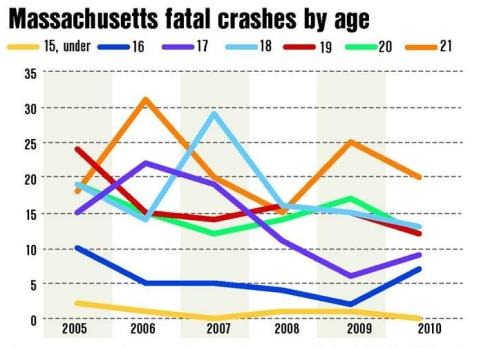I saw this a few days ago. It tells how driving lessons are being given to young people between 15 and 19 years old in Wokingham.
 I’ve written before about how lessons have been given to those as young as 11, and that that particular course was being championed by self-declared motoring guru (and former Top Gear presenter), Quentin Willson. I said then that I believe children should be kept away from cars – which are for adults – but taught road safety through cycling proficiency and things like The Green Cross Code, etc.
I’ve written before about how lessons have been given to those as young as 11, and that that particular course was being championed by self-declared motoring guru (and former Top Gear presenter), Quentin Willson. I said then that I believe children should be kept away from cars – which are for adults – but taught road safety through cycling proficiency and things like The Green Cross Code, etc.
The reason I believe that is because this current fad is simply designed to pander to the wants of people who would otherwise break the law. The best it can achieve is to make sure they break the law slightly more safely than they would have done otherwise. More realistically, though, it is simply a unique selling point (USP) dreamed up by a handful of driving instructors, and as such I can’t fault it.
This latest example is probably just a case of jumping on the bandwagon, and I doubt that it would have happened if the other lot hadn’t done it first. Again, from the perspective of making money for driving instructors, the idea cannot be faulted.
But I will say again that cars are for adults, not children. And children shouldn’t be encouraged like this when the situation with them driving illegally is already bad enough. There’s no evidence that starting them early makes them safer drivers in later life – that’s just wishful thinking. Far too many other factors govern their behaviour, and I fear that this pandering to them is simply another factor likely to worsen their behaviour rather than improve it.
Parents (many of whom are driving instructors) should concentrate on saying “NO” to their offspring a little more instead of trying to turn them into mini-adults way before their DNA has triggered enough of the right hormones for them to pull it off.
Wokingham is at least only dealing with teenagers, but 15 is still too young for someone to be tempted with something that will become a symbol of their embryonic manhood once they turn 17.
And then a story like this one comes through just to prove my point.
An ATV is an All Terrain Vehicle (I guess we’d call them quad bikes over here). Well, in Canada a paediatric group is saying that children should be banned from driving them because…
…children under the age of 16 lack the knowledge, physical size, strength, and cognitive and motor skills to operate the machines safely…
…The highest risk of injury is really between sort of [ages] 10 to 25…
Physical size and strength are obviously more relevant to ATVs. But cognitive and motor skills are definitely not. And that’s one of the major reasons young drivers have accidents after they pass their driving tests.
It translates to: they’re not as good as they think they are – even up to age 25.
These misguided adults offering kiddie-lessons can’t see what they’re really doing – they’re trying to convince children that they ARE that good, when the laws of nature guarantee that they aren’t.
I’ll say again that it’s why children should be kept away from motor vehicles, and not encouraged to play with them and made to think they’re all grown up before their time.
 This
This  But an old lady – in her 80s – got there before the restorers and fixed it herself (see image on the right). Church officials didn’t realise what she was doing until it was too late.
But an old lady – in her 80s – got there before the restorers and fixed it herself (see image on the right). Church officials didn’t realise what she was doing until it was too late.
 This
This  Nice to see that the American educational system is no better than ours. After years of dumbing down and inflated grades to make people look better than they are, the same people seem to be at universities, demonstrating a very rudimentary understanding of accident statistics and the factors which affect them.
Nice to see that the American educational system is no better than ours. After years of dumbing down and inflated grades to make people look better than they are, the same people seem to be at universities, demonstrating a very rudimentary understanding of accident statistics and the factors which affect them. This
This  Back in February I commented on a
Back in February I commented on a 

 The article states that in considering figures covering the period 1986 to 2007, there were 1,348 fewer fatal crashes involving 16-year olds after the new law was introduced, but 1,086 more for 18-year olds.
The article states that in considering figures covering the period 1986 to 2007, there were 1,348 fewer fatal crashes involving 16-year olds after the new law was introduced, but 1,086 more for 18-year olds.